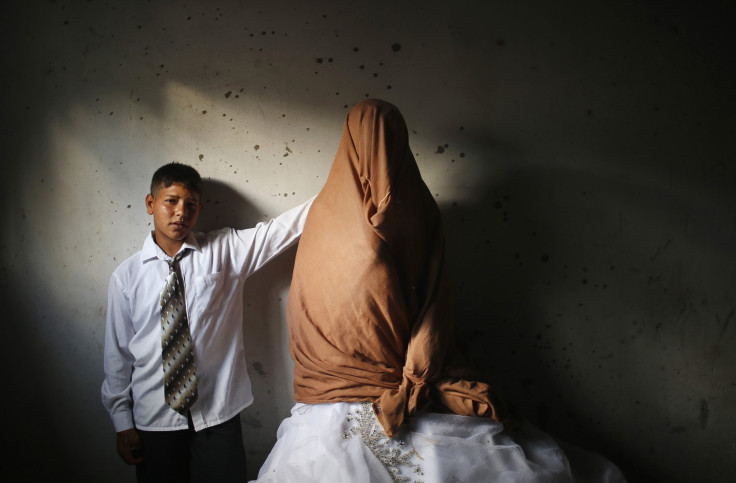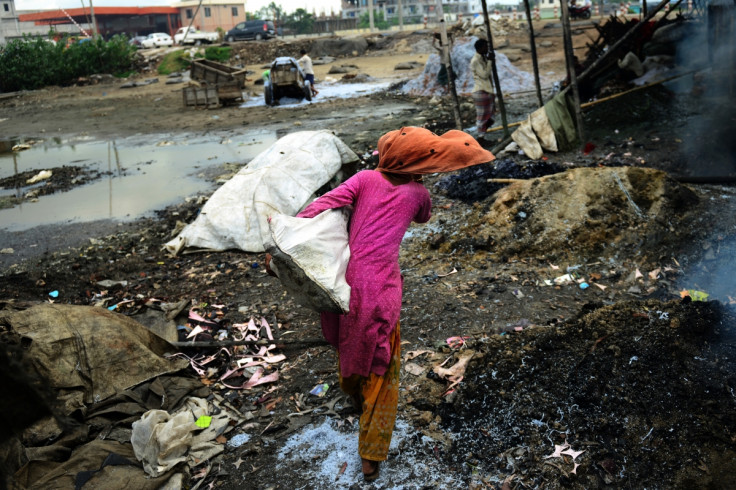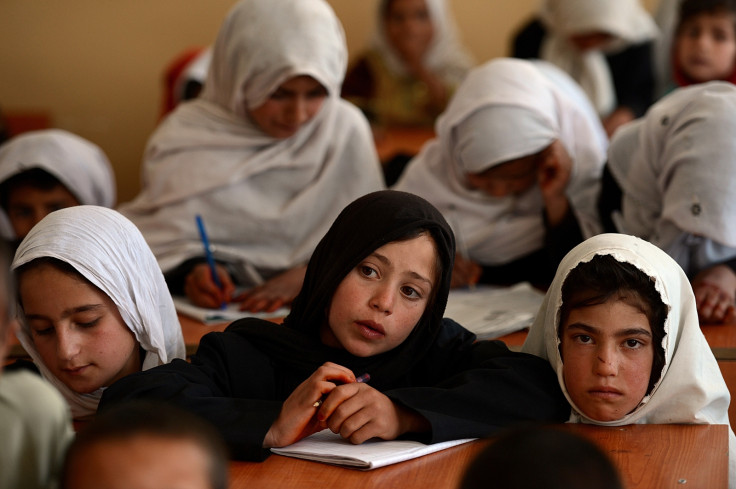International Day for the Abolition of Slavery: Why we need to end child marriage

Sixty-five years after the General Assembly adopted the convention for the suppression of trafficking and exploitation, slavery still continues. From sex trafficking to the forced recruitment of children to fight in armed conflict, 21 million women, men and children are still trapped in slavery worldwide.
Today, on the International Day for the Abolition of Slavery (2 December), child marriage is a global problem. From African and Indo-Pacific countries to Britain and the United States, 15 million girls marry before the age of 18 each year. This amounts to 41,000 girls a day; 28 girls a minute; one girl every two seconds.
According to Heather Hamilton, global coordinator of Girls Not Brides – a partnership of over 400 civil society organisations committed to ending child marriage – these shocking statistics are getting worse.
"Child marriage isn't just a wedding day, it is something that has a lifelong devastating effect on young girls," Hamilton told IBTimes UK.
"Those are huge numbers, but the latest data also tells us that the problem is getting bigger because of population growth. If we maintain the same rate of progress, the rate of child marriage will grow. We need to accelerate progress."
Devastating effects
Child marriage is both physically and psychologically damaging. Girls who are forcibly married at a young age are more likely to experience domestic abuse than their unmarried peers and many girls report their first sexual experience is forced.
Child marriage isn't just a wedding day, it is something that has a lifelong devastating effect on young girls
"If a woman gives birth before the age of 15, she is five times more likely to die in childbirth than a woman in her twenties," Hamilton said. "A child of a child bride has a much higher chance of mortality."
For girls coming forward about their fears of being forcibly married – or those who have already been married and want to escape – the problem goes further. Isolation is a key problem among child brides.
Rachel Horman, an award-winning solicitor and head of the domestic violence, stalking and forced marriage department at Watson Ramsbottom Solicitors, said her youngest client was aged just 12.
"It is far more devastating for the girl to come forward because she may have to leave her family and community – and maybe go to a care home. It can be like another world for girls – they are incredibly brave," Horman told IBTimes UK.
"It is a big thing, they may lose everything – friends, family, community. Girls are often at risk from other members of the community, who may see her as bringing shame on the family. A lot of the time, families don't see child marriage as being abusive, but the best option.
"Coming forward is a really, really courageous thing for these young girls to do."

Cultural and economic issues to blame
Different factors behind child marriage vary from country to country, but one key factor is a lack of alternatives. Child marriage is intertwined with a number of socio-economic problems.
When Faridah was 15, she was forced to drop out of school in Pakistan and marry a much older man. When she asked if she could go back into education, he became violent.
She said: "He beat me, argued with me and refused to let me go. He said: 'What's the point in educating girls? There's no point because it's the boys who get the jobs'."
Faridah's story is common among young brides. "There are many different factors involved behind child marriage. It's culturally specific to the local or national context," Hamilton explained. "It may be an economic choice related to a dowry or bride price, a lack of access to education, or related to poverty or conflict."
He beat me, argued with me and refused to let me go. He said: 'What's the point in educating girls? There's no point because it's the boys who get the jobs'
"But if you have a young girl who is not able to go to school because there isn't one or it isn't safe – if there is a lack of sanitation or there is the risk of sexual assault, a parent may think marriage is the best choice."
Essentially, though, the issue is predominantly linked to entrenched patriarchal values. "Ultimately, girls are married because they are girls," Hamilton added. "Child marriage is driven by fundamental gender inequality.
"Helping girls understand their rights, teaching them how to save money, giving them access to education and helping them make their own choices about if, when and whom they want to marry is key."
In Zambia, a project by Population Council, a Girls Not Brides member organisation, saw phenomenal results in girls at risk of marriage in just one year.
"We met girls who had just started an empowerment programme and when we asked them questions about their lives they were shy and would look away," Hamilton said. "Then we went into a programme which had been working with girls for a year and their hands were flying up to talk to us – they had a real sense of themselves."

Effect on communities
Child marriage has an enormous effect on local communities and countries. The cost of excluding girls from education in favour of marriage is high – with dire consequences on societies and economies.
Research carried out by the World Bank has shown women can expect a 1.2% higher return than men on the resources they invest in education. Providing one extra year of education to girls increases their wages by between 10% and 20%.
It takes involvement from all levels to make change. Social norms change is difficult and requires the engagement of traditional leaders, girls and governments
"When a girl is doing housework and not homework, she is not going to be contributing to her community," Hamilton said, citing research by Unicef in Nepal.
"The research showed the effect of girls dropping out of school alone on the economy – not any other factor involved in the child marriage – was a reduction in GDP of 3.84%."
"And that's just education – not the impact of maternal or infant mortality, HIV, violence, all of which effect the economy," she added. "There is a global recognition that it is a human rights problem and an issue that undermines our achievement of development goals."
As well as awareness, campaigns and government policy changes, Hamilton said, action on the ground is crucial.
"It takes involvement from all levels to make change. Social norms change is difficult and requires the engagement of traditional leaders, girls and governments," she added. "It about connecting the critical pieces of the puzzle to tackle the problem."
© Copyright IBTimes 2025. All rights reserved.





















